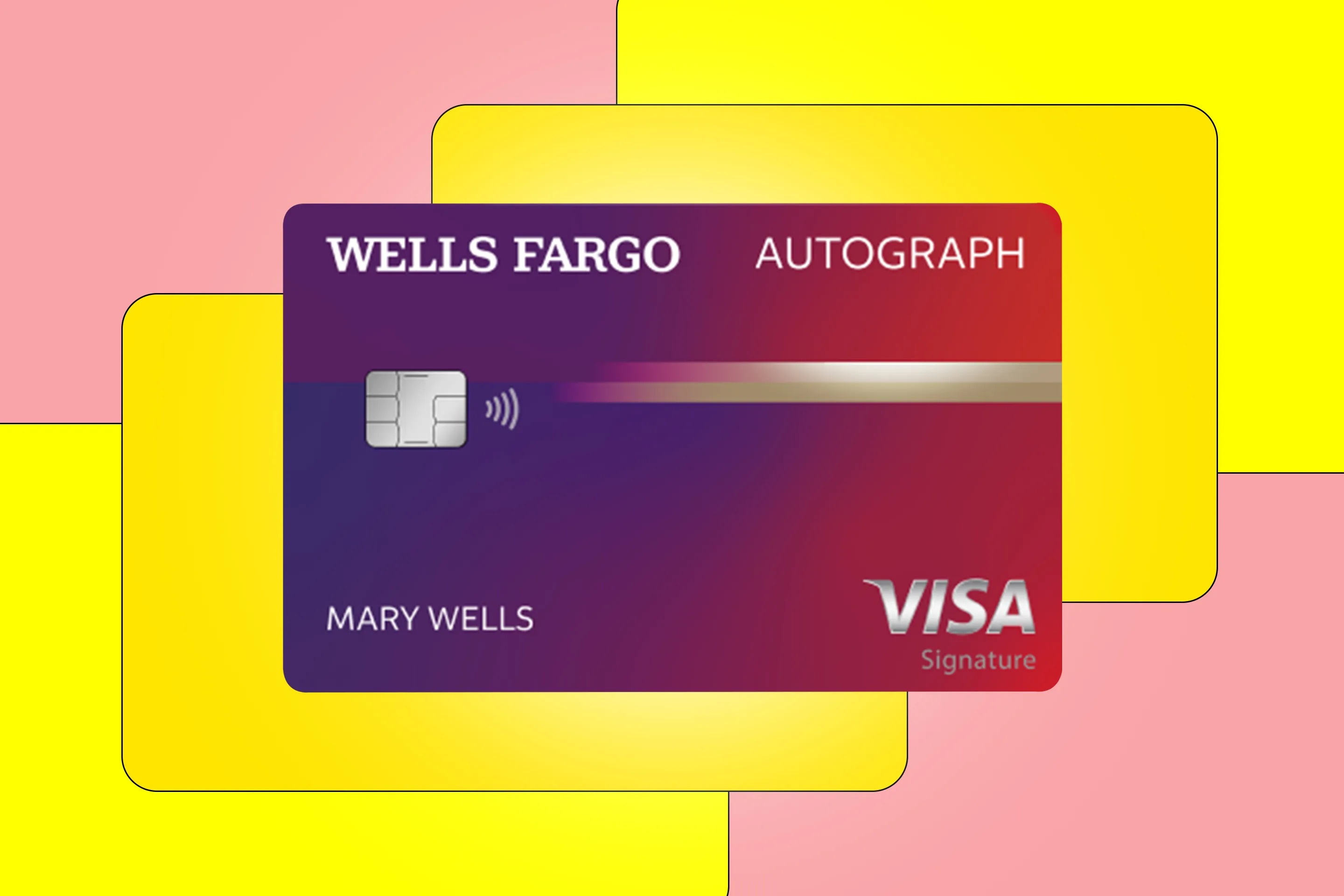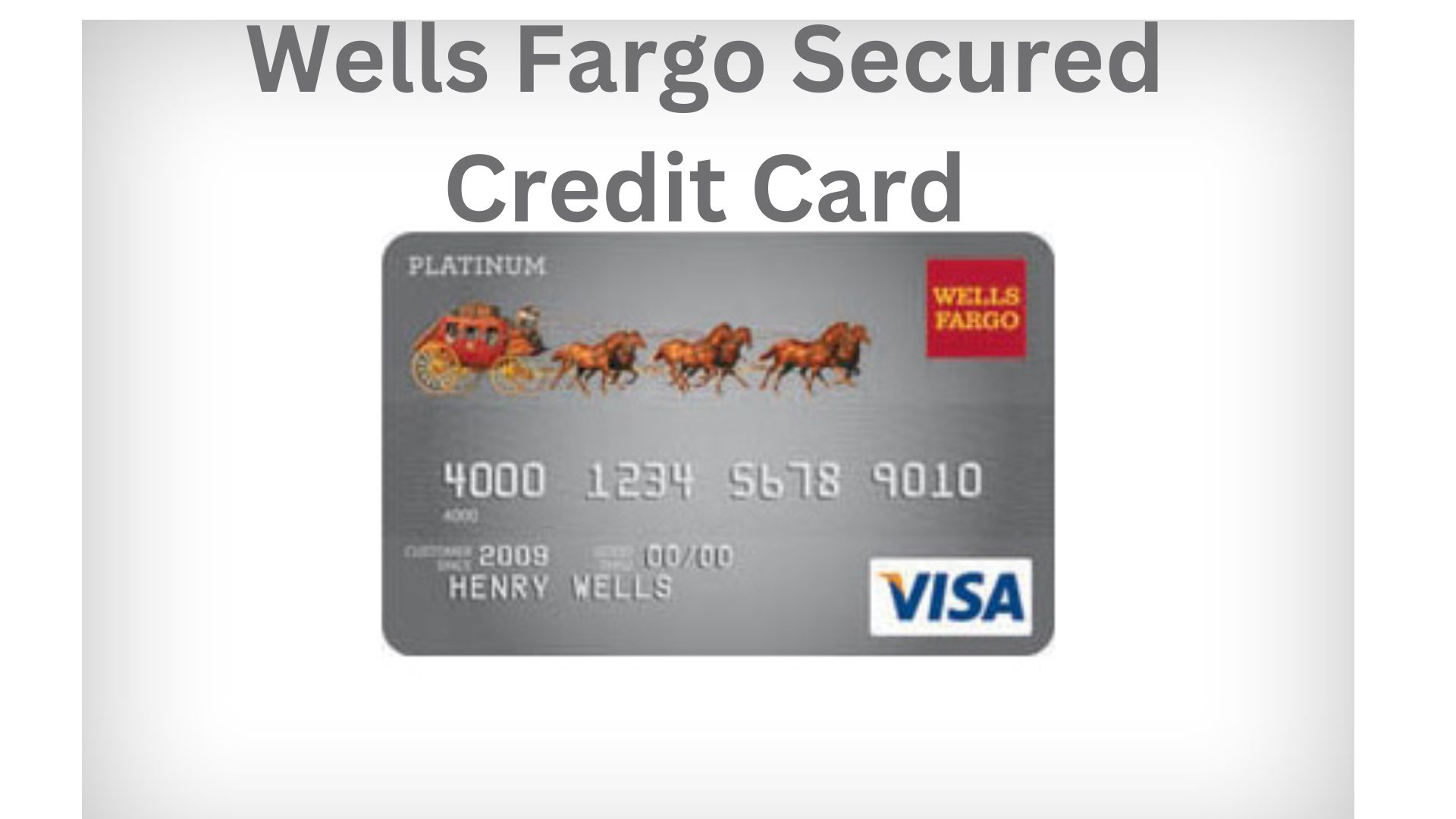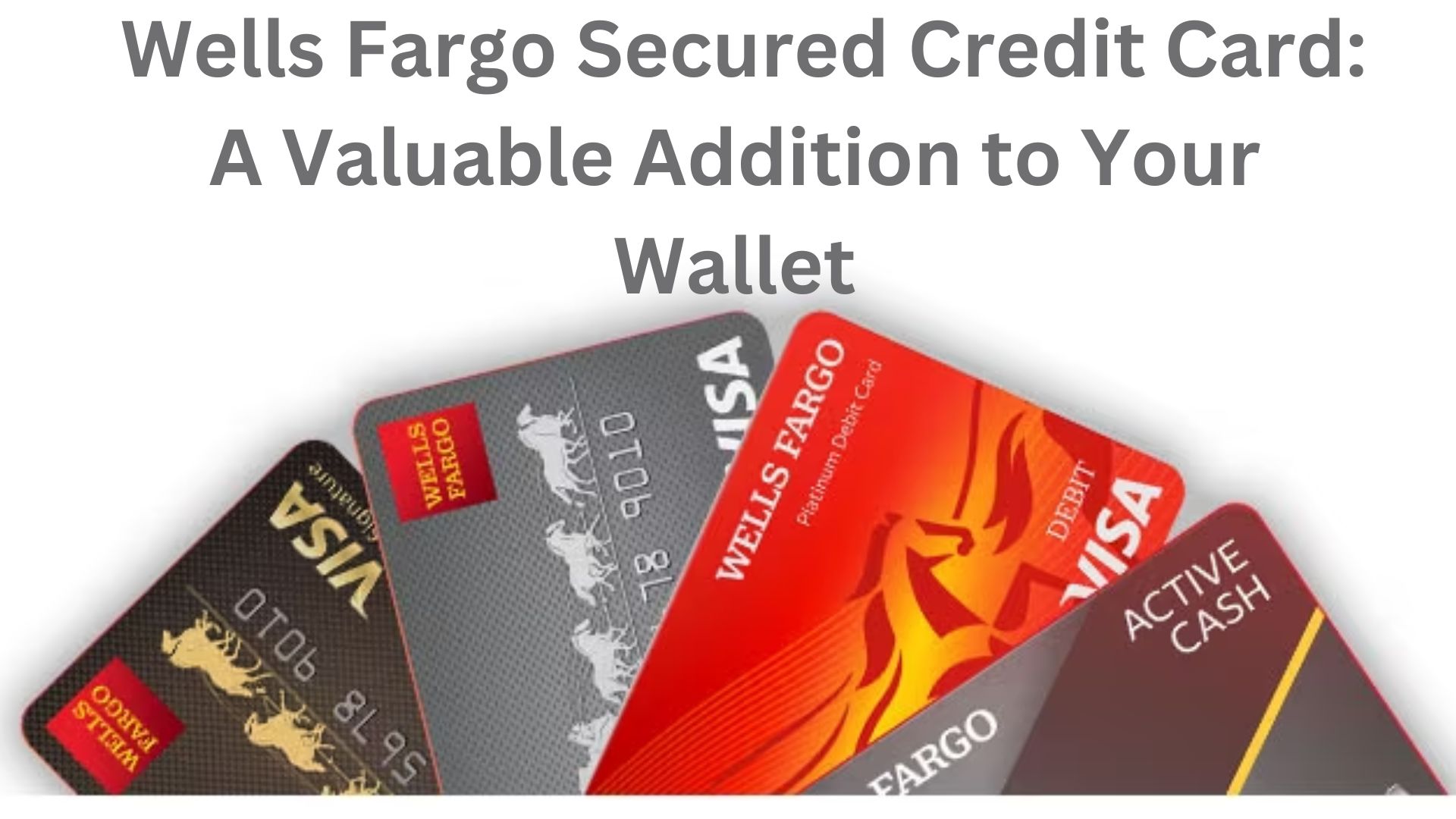Home>Finance>How To Grant Someone Access To My Wells Fargo Secured Card


Finance
How To Grant Someone Access To My Wells Fargo Secured Card
Published: March 1, 2024
Learn how to grant access to your Wells Fargo secured card with our step-by-step guide. Manage your finances effectively and securely.
(Many of the links in this article redirect to a specific reviewed product. Your purchase of these products through affiliate links helps to generate commission for LiveWell, at no extra cost. Learn more)
Table of Contents
Introduction
Secured credit cards are an excellent financial tool for individuals looking to build or rebuild their credit history. These cards function similarly to traditional credit cards but require a security deposit, which often determines the card's credit limit. Wells Fargo, a prominent financial institution, offers a secured credit card that provides a pathway to strengthening one's creditworthiness.
In this comprehensive guide, we will delve into the process of granting someone access to your Wells Fargo secured card. Whether you're seeking to share the benefits of your secured card with a family member or looking to facilitate controlled spending for a loved one, adding an authorized user to your Wells Fargo secured card can be a valuable option. We will explore the intricacies of Wells Fargo secured cards, the steps involved in adding an authorized user, and the means to manage their access effectively.
Join us as we navigate through the nuances of Wells Fargo secured cards and the process of extending access to trusted individuals. Whether you're a cardholder eager to empower a family member with responsible spending habits or simply seeking to share the convenience of your secured card, this guide will equip you with the knowledge to navigate this process seamlessly.
Understanding Wells Fargo Secured Card
The Wells Fargo secured credit card is designed to assist individuals in establishing or rebuilding their credit. It operates on the premise of a security deposit, which determines the card’s credit limit. This deposit serves as collateral and mitigates the risk for the card issuer, allowing individuals with limited or damaged credit histories to access credit. By responsibly utilizing the secured card, cardholders have the opportunity to demonstrate creditworthiness and improve their credit scores over time.
One of the notable advantages of the Wells Fargo secured card is the potential for the cardholder to graduate to an unsecured card after exhibiting responsible credit management. This transition is contingent upon consistent, on-time payments and prudent financial behavior, offering a pathway to a traditional credit card without the need for an initial security deposit.
Furthermore, the Wells Fargo secured card provides access to online tools and resources that enable cardholders to track their credit score, monitor their spending, and receive personalized financial tips. These features contribute to a holistic approach to financial management, empowering individuals to make informed decisions and cultivate healthy financial habits.
Understanding the fundamental principles of the Wells Fargo secured card is crucial before considering the addition of an authorized user. By comprehending the underlying mechanisms of this financial tool, cardholders can make informed decisions regarding the extension of access to trusted individuals while leveraging the benefits of the secured card to nurture financial growth.
Adding an Authorized User
Adding an authorized user to your Wells Fargo secured card can be a strategic decision with various potential benefits. By extending access to a trusted individual, such as a family member or close friend, you can provide them with the opportunity to utilize the card for specific expenses while enabling them to build their credit history under your supervision.
The process of adding an authorized user to your Wells Fargo secured card typically involves contacting the card issuer, Wells Fargo, either through their online banking platform, mobile app, or customer service hotline. Cardholders may be required to provide the authorized user’s personal information, including their full name, date of birth, and in some cases, their Social Security number. It’s essential to ensure that the authorized user understands the responsibilities and limitations associated with their access to the secured card, fostering transparency and mutual understanding.
Upon successful addition, the authorized user will receive their own card linked to the primary account. While the authorized user can make purchases using the card, the primary account holder retains full accountability for the charges incurred. This arrangement allows the primary account holder to monitor and manage the authorized user’s spending, providing a level of oversight and control over the card’s usage.
It’s important to note that the primary account holder has the authority to set spending limits for the authorized user, further regulating their access to credit. This feature can be particularly valuable for individuals seeking to assist a family member in developing responsible spending habits or facilitating controlled access to credit for specific purposes.
By comprehending the process of adding an authorized user to a Wells Fargo secured card, cardholders can navigate this endeavor with clarity and purpose, harnessing the potential benefits for both themselves and the authorized user.
Managing Authorized User Access
Effectively managing the access granted to an authorized user on your Wells Fargo secured card is paramount to ensure responsible usage and maintain control over the account. This entails implementing measures to oversee the authorized user’s activity, set spending limits, and cultivate a collaborative approach to credit management.
One of the primary means of managing an authorized user’s access is through regular monitoring of the card’s transactions and expenditures. Wells Fargo provides robust online banking tools that enable primary account holders to track the usage of the secured card, allowing them to review purchases made by the authorized user and identify any unauthorized or excessive spending.
Furthermore, the option to set spending limits for the authorized user offers a proactive method of controlling their access to credit. By establishing predefined spending caps, the primary account holder can mitigate the risk of overspending and ensure that the authorized user adheres to predetermined financial boundaries. This feature fosters a sense of accountability and prudence in the utilization of the secured card.
Communication and financial education also play a pivotal role in managing authorized user access. Engaging in open dialogues with the authorized user regarding responsible spending practices, the significance of timely payments, and the impact on credit scores can contribute to a collaborative approach to credit management. This proactive engagement can instill financial literacy and promote conscientious financial behavior.
In the event that the authorized user’s access needs to be modified or revoked, the primary account holder can liaise with Wells Fargo to make the necessary adjustments. Whether it involves altering spending limits, suspending the authorized user’s privileges, or removing them from the account entirely, maintaining the flexibility to manage access is essential in adapting to changing circumstances and safeguarding the account’s integrity.
By actively implementing these strategies and leveraging the resources provided by Wells Fargo, primary account holders can effectively manage the access granted to authorized users on their secured card, fostering a collaborative and responsible approach to credit utilization.
Conclusion
Granting someone access to your Wells Fargo secured card can be a strategic decision with the potential to foster financial growth and responsible credit management. By comprehending the nuances of the Wells Fargo secured card and the process of adding an authorized user, individuals can navigate this endeavor with clarity and purpose, leveraging the benefits of the secured card to empower trusted individuals and nurture healthy financial habits.
The Wells Fargo secured card serves as a valuable tool for individuals seeking to establish or rebuild their credit history. Its structured approach, anchored by a security deposit and complemented by online resources, offers a pathway to financial empowerment and creditworthiness. Understanding the foundational principles of this financial instrument is crucial in laying the groundwork for extending access to authorized users.
Adding an authorized user to a Wells Fargo secured card entails a deliberate process that necessitates clear communication and transparency. By providing trusted individuals with controlled access to the secured card, primary account holders can facilitate responsible spending and credit building under their guidance. This collaborative approach can instill financial literacy and promote conscientious financial behavior, benefiting both the primary account holder and the authorized user.
Effectively managing the access granted to an authorized user is essential in maintaining control over the account and ensuring responsible usage. By leveraging the monitoring tools and spending limit features offered by Wells Fargo, primary account holders can oversee the authorized user’s activity, set financial boundaries, and foster a collaborative approach to credit management. This proactive engagement can contribute to a mutually beneficial arrangement that promotes financial empowerment and accountability.
In conclusion, the process of granting someone access to your Wells Fargo secured card encompasses a multifaceted approach that intertwines financial literacy, responsible credit management, and collaborative oversight. By navigating this process with diligence and foresight, individuals can harness the potential of the secured card to empower trusted individuals, cultivate healthy financial habits, and pave the way for enduring financial well-being.














